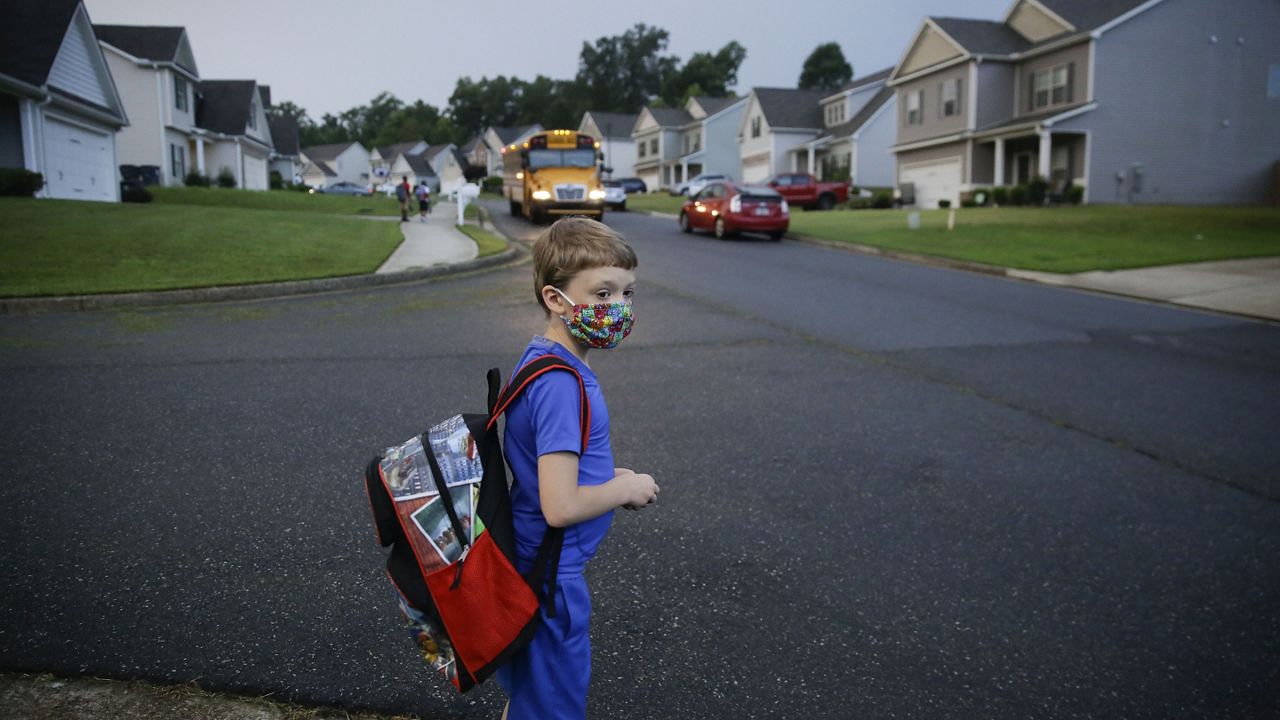The Centers for Disease Control and Prevention released new, specific guidelines for reopening K-12 schools on Friday, long-awaited guidance promised after the administration made it their goal to bring the majority of kids back for in-person learning.
The new guidelines include five key mitigation strategies – masking, distancing, hand washing, cleaning and contact tracing – plus specific recommendations based on the number of cases of COVID-19 in the surrounding community.
CDC Director Dr. Rochelle Walensky told reporters Friday that masking and distancing were the most important things for schools to focus on, while she noted that testing and vaccination of teachers are not required for reopening, though they could be extra layers of protection.
The CDC has defined reopening "safely" as holding in-person learning with little to no in-school transmission of the virus. The agency has published data from school districts that reopened with mitigation measures and reported very few cases in in-school transmission.
"I know that parents, teachers, state and local leaders have been stretched thin trying to navigate this pandemic," Dr. Walensky said Friday. "We believed it was important to create a one-stop shop to provide the scientific information they need."
Walensky said that the CDC's strategy for reopening schools "is grounded in science and the best available evidence."
The new guidelines are not a mandate to open, but they provide K-12 schools with the best roadmap yet and reiterate that schools should be the last places to close amid the pandemic.
President Biden has made it a goal to open the majority of K-8 schools by the end of April, though the administration has been criticized for setting a modest benchmark.
The new guidelines offer a phased approach to reopening for school districts based on COVID-19 transmission in their area. The agency has clarified blue, yellow, orange and red transmission "indicators," defined by the number of new cases per 100,000 people in the community and the percentage of positive coronavirus tests.
If a county is in the yellow zone, for example, their test positivity rate would be between five and eight percent, but they can return for full in-person learning and hold sports practice and extracurricular activities with proper distancing. In the red zone, extracurriculars are virtual only.
"Enabling schools to open and remain open is a shared responsibility," CDC Director Walensky said. "Community members, students, families, teachers and school staff must do their part."
Walensky said the new strategy released Friday was based on recent data and on conversations with parents, teachers and local leaders.
It does not officially recommend regular testing to screen students and staff, but the it suggests that screening could be an "additional layer" of mitigation, and the documents provides instructions on how school districts should consider it.
The CDC guidance also doesn’t require vaccinations for teachers ahead of reopening, in line with recent comments from Director Walensky. Some teachers unions around the U.S. have called for vaccines to be made available to teachers before they go back to work.
"The science has demonstrated that schools can reopen safely prior to all teachers being vaccinated," Walensky said Friday.
More than half of states have opened vaccinations to teachers, according to EducationWeek, and CDC recommendations place teachers in Phase 1B for vaccinations, the second wave. But each state – and sometimes county – has its own schedule for giving out the shots.
The new guidance does say that teachers should be vaccinated "as soon as supply allows," and it encourages removing barriers to them getting the shot.
In a scientific brief published with its new guidance on Friday, the CDC notes that less than 10 percent of COVID-19 cases have been among children and that school studies show that virus spread was rare with the right measures in place.
The new reopening guidelines were not drafted with direction from the White House, both Press Secretary Jen Psaki and Director Walensky confirmed Friday.
"I can assure you that this is free from political meddling," Walensky said, an accusation faced by the previous administration.
Many of the measures laid out in the guidance are similar to prior CDC recommendations, but officials said Friday that the new strategy offers more specific suggestions and is based on new data.
"There’s more science to rely on. And we've learned a lot from that science. That science is woven into the fabric of these guidances," Walensky said. "We've been much more prescriptive here."
Many schools are already open for some in-person learning. But the exact number — which some estimate to be as high as 60 percent, higher than Biden’s goal — is unclear, and officials said most schools were doing “hybrid” learning, which has different definitions.
On Thursday, White House Press Secretary Jen Psaki said that the president ultimately wants schools to reopen five days per week and signaled that the CDC guidelines are the next step.
"I can assure any parent listening that his objective, his commitment is to ensuring schools are open five days a week," Psaki said.
On Friday, the Department of Education announced that it would begin collecting data on the number of schools that had reopened and what kind of in-person learning they were doing.
"It is critical that we learn how students are learning and the status of the reopening question on the ground," said Donna Harris-Aikens, Senior Advisor for Policy and Planning at the Department of Education. "So this data will be the highest quality survey from the federal government."
Harris-Aikens also said that Friday’s guidance would be the first in a "series" of strategies that the CDC and the Department of Education plan to publish for teachers, parents and staff.




